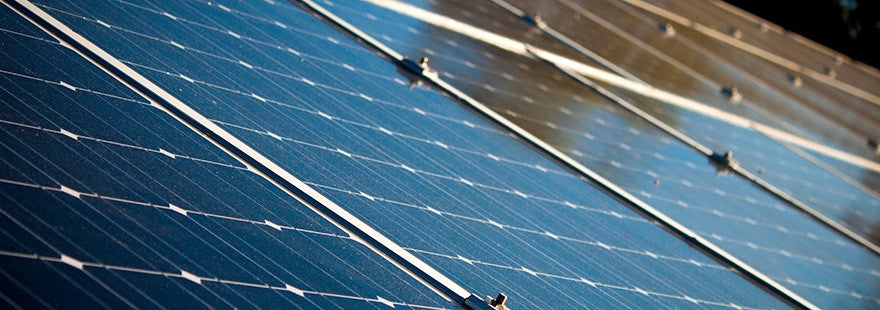Map Out Where Your Panels Will Go
This tip might seem like an obvious one, but mapping out where you put the panels on your camper’s roof plays a crucial role into your switch over to solar energy, especially if you have a small camper! When you position these solar panels, you’ll want to make sure you are still able to walk on the roof of your camper. You don’t want to set up these solar panels so that certain areas of your camper’s roof are now inaccessible.
Also, you’ll want to position these panels in a way so that you can tilt the panels. By tilting your solar panels, you’ll be able to gather more sunlight, especially in the winter when the sun is lower on the horizon.
Before you begin the installation process, we recommend mapping out where the panels will go and make sure you can still reach all the spots on your roof. Once you begin setting up, you’ll have to drill those solar panels into your roof. So it’s important you test before you start drilling!
Make Sure You Have All Needed Supplies
There are many parts needed to get your camper ready for being powered by solar energy. The most obvious of these are the solar panels. The number of solar panels you want on your roof is dependent on the number of AMP’s you will use in your camper daily. A quick Google search will be able to convert your daily AMP’s into wattage. From there you can determine what solar panels and how many your camper needs to run off of solar energy.
You’ll also need a charge controller for your new solar energy system. An RV charge controller works to regulate the voltage coming from solar panels to the batteries. This controller also limits the flow of current, which helps prevent overcharging. Which leads us to the next item you’ll need for your RV solar system, batteries. Batteries are what hold the charge coming from the solar panels and hold onto the charge until the energy is ready to be used by all your RV’s devices and appliances.
Next, you’ll need an inverter. Inverters take the energy stored up in your batteries and convert it so it’s energy that can be utilized throughout your RV to turn on the lights, TV or various other electronic devices you are looking to use.
To conveniently turn your inverter on and off, you’ll need to also have an inverter remote. This remote will make it so you can easily manage your inverter and turn it off when your RV does not require AC power.
Lastly, a transfer switch will allow you to hardwire two sources of AC to the RV’s breaker panel. This transfer switch allows you to switch what is your RV’s main source of power.
Invest in a Solar Kit
Many RV owner’s when looking to update their RV with solar power, decide to invest in a solar charging kit. Investing in a kit helps ensure that all the pieces work together and set up is easier for the user. Also, when bundled together, these solar kits can even help you save money on the essential solar energy parts you need for your RV.
Take for example the Go Power Solar Elite Charging Kit. This kit includes necessary parts for switching over to solar energy including:
- 160 watt solar charging kit + 160 watt expansion kit (GP-RV-160 + GP-RV-160E)
- 2000 watt pure sine wave inverter charger with transfer switch for AC power (GP-IC-2000-12)
- 30 amp pulse width modulated digital regulator (GP-PWM-30)
- 30 amp pre-wired automatic shore power/inverter AC switching kit (GP-TS)
- DC inverter install kit (GP-DC-KIT4)
- Inverter Remote on/off (GP-SWR-B)
As we mentioned earlier with transfer switches, they play a crucial role of attaching to your RV’s breaker panel and switching what is the main source of RV power. Often Solar kits, this one included, will come with an Inverter Charger with built in Transfer Switch to save space. An Inverter Charger functions as a power inverter, battery charger, and transfer switch eliminating the need for multiple units. Making it even easier to set up for solar power.
Reach Out Today
If you have questions about how to get your camper set up for solar energy this summer, contact our team! Get one step closer to relying less on your generator and start converting your camper over to solar energy today!

